Filipino Food Dishes: Basic Overview
Common Ingredients
Common Cooking Methods
Courses
Meals
Key Taste
Eating Etiquette
Meal Presentation
Culinary Festivals
Influence and Fusion
Popular Types of Filipino Dishes
-
Grilled and Barbecued Dishes
Filipino grilled and barbecued dishes are characterized by their savory, smoky flavor and juicy texture.
They are usually marinated in a spiced mixture before being grilled or roasted.
These dishes can be skewered, spit-roasted, or grilled directly over an open flame.
Marinades often combine soy sauce, vinegar, calamansi, and local spices.
Popular meats include pork, chicken, and fish.
Some Filipino grilled and barbecued dishes are gluten-free.
-
Dry Noodle Dishes
Filipino dry noodle dishes, many of which are known as pancit, are famous for their savory and sometimes slightly sweet flavor profiles.
They represent a mix of traditional and fusion dishes, inspired by Chinese cuisine.
They often feature a mix of stir-fried noodles with vegetables and meat or seafood.
Noodles are typically seasoned with soy sauce, garlic, and other local spices.
-
Stews
Filipino stews are very hearty and flavorful.
They are often cooked with a flavorful base of vinegar, soy sauce, fermented fish or shrimp paste, coconut milk, tomato sauce, or other condiments.
Typical ingredients include meat or seafood simmered in the sauce.
Certain Filipino stews are gluten-free if not made with traditional soy sauce.
-
Soups
Filipino soups are usually flavorful entrees that can also be a hearty treat.
They often contain a clear or slightly thickened broth, with ingredients such as meat, seafood, noodles, and vegetables.
Certain Filipino soups are gluten-free or vegetarian-friendly.
-
Desserts
Filipino desserts are usually sweet and colorful, combining both local and Western cooking traditions.
Their main ingredients are rice, coconut, tropical fruits, beans, milk, ice cream, and many sweetened ingredients.
Filipino rice-based desserts are usually gluten-free and vegetarian-friendly.
-
Fried Dishes
Filipino fried dishes are diverse, ranging from spring rolls to deep-fried meat or vegetables.
They can have indigenous or Chinese origins.
-
Snacks
Many Filipino snacks can serve as a full meal on their own.
They can be hand-held or served on a plate as a complete dish.
Morning and afternoon snacks are even considered essential meals in the Philippines.
Filipino dishes refer to dishes prepared and enjoyed in the Philippines, one of the most famous cuisines in Southeast Asia. These dishes result from the interactions between ancient traditions and various major cuisines.
There are three main regional cuisines: Luzon (North), Visayas (Central), and Mindanao (South). The country has numerous ethnic minorities distributed over many islands, which contributes to the significant diversity of local dishes.
Spanish culinary traditions have a noticeable impact on Filipino cuisine, including the ingredients, flavors, and preparation methods. But there are other forces shaping how Filipinos prepare their food.
Therefore, let’s start by exploring the colorful history of Filipino dishes. The country’s street food scene is of sublime quality, so I will also look over this fascinating aspect.
Lastly, I will guide you through recommended drink choices to accompany popular Filipino dishes before going over a few rules of the table manner here.
Before you read, check out the filter or click on the dishes to make your experience smoother!
40 Fantastic Filipino Dishes
Discover the most well-known Filipino dishes listed by popularity below! You can navigate my recommended specialties more easily by using advanced filters, including alphabetical sorting, main ingredients, taste, cooking methods, dish types, courses, and global popularity.
In addition, feel free to filter the list based on specific culinary styles such as traditional, national, street food, fusion, and exotic dishes.
Balut
- Exotic
- National
- Street Food
- Traditional
Balut, also known as balot, is a traditional Filipino dish consisting of fertilized duck eggs that have been incubated for 14 – 18 days.
It contains semi-developed duck embryos within the shell, which people normally boil and eat. Depending on the incubation period, the egg may contain a small duck embryo with soft, edible bones.
This exotic dish is often considered the Philippines’ national street food, but it can also be enjoyed as an appetizer or side dish. While locals are consuming less and less traditional balut, many chefs have experimented with preparing balut in innovative ways.
Balut originated in China and was introduced to the Philippines by Chinese traders or immigrants in the latter half of the 16th century. However, some sources put the time as the 19th century.
Humba
- Traditional
Humba is a Filipino dish prepared by slow-cooking pork belly (or sometimes chicken) in a mixture of vinegar, soy sauce, fermented black beans (tausi), sugar, and various spices. Sliced banana blossoms and hard-boiled eggs are traditional add-ons.
This braised pork dish is usually associated with the Visayan Islands in central Philippines. Its name was derived from the local expression “humot na baboy,” which means “aromatic pork.”
Humba emerged in the Philippines before the arrival of the Spanish and was adapted from Chinese red braised pork belly (hong shao rou).
Longganisa
- Fusion
- Traditional
Longganisa is a fresh or smoked Filipino sausage that is heavily influenced by Spanish cuisine. Based on Spanish longaniza, it possesses vibrant red, orange, or yellow color from annatto.
Locals often prepare longganisa with lean and fatty pork, though chicken, tuna, and beef are used in many versions. Aside from the commercially sold links, this Filipino sausage is also available in patties, especially when it is made at home.
In the Philippines, Pampanga longganisa is one of the most favorable varieties.
Tocino
- Fusion
Tocino is a favorite type of bacon in the Philippines. Hailing from Spain, it is made by cutting pork belly into thin strips, combining them with various spices like annatto and anise wine, and curing in the fridge for days.
Filipinos usually boil, grill, or fry tocino to serve it for breakfast or lunch. Tosilog is a standard Filipino breakfast meal that features tocino rice, fried egg, and atchara (pickled papaya).
Halo-halo
- Street Food
Halo-halo, literally “mix-mix,” is a renowned cold dessert in Filipino cuisine. It consists of crushed ice, coconut milk or evaporated milk, and various toppings, such as cheese, ice cream, flan, sweetened beans, plantains, or jackfruits.
Halo-halo traces its roots back to Japanese Filipinos, who introduced Japanese kakigori (shaved ice). This sweet treat was later adapted with native tropical elements, resulting in the temptation known as halo-halo.
There are no fixed recipes for halo-halo, and locals usually prepare it with any sweet elements available. For serving, this cold dessert usually comes in a tall glass and is eaten with a long spoon.
Leche Flan
- Fusion
Leche flan is a well-known caramel-topped custard dessert in the Philippines. Inspired by Spanish cooking, it is often steamed directly over a fire in a tin mold of oval shape called llanera.
The main ingredients of leche flan are egg yolks, condensed milk, and evaporated milk, which come together to form its creamy custard base. Besides steaming, this custard dessert can also be prepared by baking in a water bath.
Leche flan is a popular dessert for celebratory events. There is a richer and heavier version made with more sugar and yolks.
Puto
- Traditional
Puto is a classic steamed rice cake in the Philippines. It is made with galapong, a type of fermented rice dough.
A standard puto usually has a yeasty smell with the subtle fragrance of banana leaves. This steamed cake should have a soft, moist, and fine-grain texture.
Puto is commonly enjoyed as an accompaniment with other savory specialties or topped with various toppings, like cheese, salted eggs, or grated coconut.
Aside from referring to steamed rice cakes, the term puto sometimes encompasses a wide range of Filipino steamed cakes in general.
Buko Pandan
- Traditional
Buko pandan is a traditional Filipino dessert or fruit salad that consists of a coconut milk base with sago pearls, pandan leaves, gelatin, and numerous toppings, such as cream and palm fruits. It is often enjoyed as a snack or a dessert after a meal or during a party.
During the summer, buko pandan is especially popular as a way to relieve the heat. Thanks to the addition of pandan leaves, this light treat possesses an attractive light green color.
Buko pandan is also available as a sweet beverage, which has a more liquid texture than the dessert version.
Pancit
- Fusion
- Traditional
Pancit, also known as pansít, refers to various Filipino noodle specialties that usually blend local ingredients with Chinese and Spanish methods. Many of these dishes were introduced or popularized by Chinese immigrants.
Egg noodles and rice noodles are among the most popular ingredients for making pancit. Interestingly, some versions don’t even include noodles but rather use strips of young papaya, coconut, bamboo shoots, mung bean sprouts, or seaweed.
Braising, cooking noodles in a broth, and stir-frying are common ways of preparing pancit. Filipinos often add a squeeze of calamansi juice for a touch of sourness to the noodles.
There are countless regional pancit variations throughout the Philippines, each made with different main ingredients and flavorings.
Pancit Canton
- Fusion
- Traditional
Pancit canton is among the most popular noodle dishes in the Philippines. Locals prepare it by stir-frying egg noodles with various ingredients, such as meat or seafood, vegetables, and soy sauce.
Influenced by Chinese cooking, pancit canton is a hearty dish with a boldly savory taste. This stir-fried noodle dish is usually garnished with calamansi wedges, sliced scallions, fried garlic, or hard-boiled eggs.
Pancit Palabok
- Fusion
- Traditional
Pancit palabok is a well-known Filipino noodle dish made with peeled shrimp. Both the noodles and the shrimp are coated with a creamy orange shrimp sauce.
Common ingredients for pancit palabok include noodles, boiled pork belly, tofu, eggs, and shrimp. The noodles are thinner than regular ones, absorbing the sauce better.
In addition to the name palabok, salsa na malapot is another term used to refer to the thick, orange sauce characteristic of this noodle dish.
Pancit Malabon
- Traditional
Pancit Malabon is a Filipino noodle dish created in Malabon City. It sports a vibrant yellow-orange color created by annatto.
Pancit Malabon combines thick rice noodles with regional seafood, such as squid, shrimp, mussels, oysters, and smoked bangus. There is an intriguing version in which bamboo shoots are used as a substitute for noodles
Pancit Bihon
- Fusion
- Traditional
Pancit bihon, also known as pancit bihon guisado, is a sought-after Filipino noodle stir-fry introduced by Chinese immigrants. Its main ingredient is bihon noodles, a type of dried rice vermicelli noodles.
For other ingredients, pancit bihon typically includes chicken, prawns, and various vegetables such as cabbage and carrots. Soy sauce, garlic, and fish sauce or oyster sauce are common choices for flavorings.
Pancit Sotanghon
- Street Food
- Traditional
Pancit sotanghon is a beloved Filipino noodle specialty featuring thin, transparent glass noodles made from mung bean starch. It is a well-known street food in the country.
To make pancit sotanghon, once the noodles are blanched, they are combined with various sautéd ingredients, such as meat (chicken or pork), vegetables (carrots, cabbage, snap peas), and various condiments.
Pancit Miki
- Traditional
Pancit miki is either a noodle soup or a noodle stir-fry in Filipino cuisine. It is prepared with thick egg noodles (or bihon noodles), meat or seafood, and a variety of vegetables and leafy greens.
Similar to other pancit dishes in the Philippines, pancit miki comes with soy sauce in the flavorings, calamansi on the side, and calamansi wedges or hard-boiled eggs on top.
Filipino Spaghetti
- Fusion
Filipino spaghetti, also known as sweet spaghetti, is a fantastic Filipino fusion dish. It is a unique take on Italian spaghetti and is a common sight at local celebrations, especially children’s birthday parties.
What makes Filipino spaghetti different from the classic version is the sauce. Instead of Bolognese sauce, this Filipino specialty features a thicker, richer, and sweeter sauce made with banana ketchup or brown sugar.
In addition, locals usually add sliced hot dogs, smoked longganisa sausage, and ground meat to Filipino spaghetti. Invented between the 1940s and 1960s, this Filipino pasta dish is a popular and affordable dish for many people.
Lumpia Shanghai
- Fusion
- Street Food
- Traditional
Lumpia Shanghai, also known as lumpiang Shanghai or Filipino spring rolls, is a type of deep-fried spring roll in Filipino cuisine. Locals usually serve it as an appetizer and street food.
A typical Filipino spring roll consists of a crepe-like pastry skin wrapping around a savory filling of ground pork sautéed with chopped vegetables, such as carrots and scallions. The pork and wrappers can be moistened with eggs.
Besides pork, lumpia Shanghai can be made with legumes, dairy, or other types of meat. Filipinos usually serve lumpia shanghai with sweet and sour dipping sauces, garlic mayonnaise, sweet chili sauce, or banana ketchup.
Lumpia Shanghai likely emerged before the 16th century, influenced by the culinary traditions of Hokkien immigrants, Spanish settlers, and the local population. Despite its name, this type of spring roll has no actual connection with Shanghai.
Lechon Kawali
- Traditional
Lechon kawali is a Filipino deep-fried dish made from pork belly. Its preparation involves slicing slabs of pork belly (known locally as liempo) into cubes, marinating them, and deep-frying them in a wok or pan.
Today, many people prefer to cook lechon kawali in an oven or air fryer to reduce the fat content. Leftover lechon kawali can be used in fried rice, salads, stews, or spring rolls.
Tapa
- Traditional
Tapa is a Filipino dish of dried or cured meat, with pork, beef, mutton, venison, or even fish as the main ingredients. The meat is thinly sliced before being cured with salt and various spices, but some modern recipes only involve marinating the meat, not drying it.
Tapa is usually grilled or pan-fried until it’s cooked through and slightly crispy. Cooked tapa is usually paired with steamed rice, fried rice, atchara (pickled papaya strips), tomatoes, and vinegar or ketchup.
Alternatively, many people use tapa in the classic breakfast combo tapsilog. Many restaurants in the Philippines specialize in tapa and tapsilog or place these two dishes high on their menu.
The word tapa is believed to come from “capa,” the Proto-Austronesian word for “smoking.” Tapa in Filipino cuisine is distinct from Spanish tapas, which are small plates of various appetizers or snacks usually served with alcoholic drinks.
Inihaw
- Street Food
- Traditional
Inihaw is a large family of grilled and roasted dishes in Filipino cuisine. The name originates from a blend of the two words “grilling” and “roasting” in Tagalog and other local tongues.
Pork, beef, chicken, seafood, or even offal are the most typical ingredients for inihaw. These types of protein can be cubed or cooked as a whole animal.
Inihaw can be skewered before being grilled or grilled directly. The ingredients are usually marinated beforehand and can even be basted with the marinade during grilling.
Filipinos serve inihaw with pusô (rice cooked in coconut leaves), atchara (grated and pickled unripe papayas), and various drippings sauces, depending on the variety.
In the Visayas, pork inihaw is often combined with kinilaw (a Filipino ceviche-like dish) to create a dish called sinuglaw.
Lechón
- National
- Traditional
Lechón, also spelled as lechon, is an iconic Filipino dish prepared by roasting a whole pig on a spit. Locals cook lechón by roasting a pig evenly on all sides for several hours while constantly basting it with marinade.
While lechón has a Spanish name and has connections with the roasted sucking pig dish of the same name in Spain, it is actually a traditional Filipino dish. When the Spanish colonized the Philippines, they attributed the name lechón to local roasted pig dishes.
Many Latin American also have Spanish-style lechón, but the Filipino version stands out thanks to the extensive use of local spices. In addition, lechón often means roasted pork made from adult pigs in the Philippines.
Lechón is a must-have choice for many special occasions, such as fiestas (festivals), baptisms, birthdays, weddings, holiday meals, and family get-togethers. There are two main styles: Luzon (Manila) lechón and Visayas (Cebu) lechón.
Chicken Inasal
- Traditional
Chicken inasal is a Filipino grilled chicken dish originating in Western Visayas. It is classified as an inihaw dish and a variant of lechon manok.
The name inasal is derived from a word meaning “grilled” or “skewered” in Hiligaynon, a regional language in the Visayan Islands. A Filipino grilled chicken dish similar to chicken inasal was first mentioned in the late 19th century, but the modern version only emerged in the 1970s.
Locals prepare chicken inasal by marinating chicken breasts or legs in a calamansi juice-based marinade before grilling them over hot coals. The marinade is continually basted on the chicken during the process.
There are two popular versions of chicken inasal in the Philippines: Iloilo-style and Bacolod-style. The Iloilo-style chicken inasal is typically sweet, whereas the Bacolod-style chicken inasal has a tangier profile.
Lechon Manok
- Street Food
- Traditional
Lechon manok is a famous Filipino spit-roasted chicken dish that is widely available as a street food and main dish. People prepare it by roasting the chicken over a charcoal fire or cooking it using a rotisserie.
In preparing lechon manok, a whole chicken is marinated in a blend of fish sauce, soy sauce, black pepper, onions, garlic, bay leaves, and either brown sugar or molasses. The chicken is often stuffed with lemongrass to enhance the flavor.
Satti
- Street Food
- Traditional
Satti is a Filipino dish prepared by skewering strips of marinated beef or chicken on sticks and grilling them. This inihaw specialty can also be made with pork or offal, especially liver, for non-Muslim consumers.
Satti is considered the local take on satay, which originated in Java, Indonesia. But while satay is a versatile dish and snack for any meal, many Filipinos like to serve satti with pusô (Filipino rice cake) and peanut-based dipping sauces for breakfast.
Although satti is present throughout the Philippines, it is more common in the southern region, especially in Mindanao and its surrounding islands. Notable areas associated with satti are Zamboanga, Tawi-Tawi, and the Sulu Archipelago.
Isaw
- Exotic
- Street Food
- Traditional
Isaw is a Filipino snack and street food dish prepared by boiling pig or chicken intestines, marinating them, threading them onto a stick, and grilling them. The boiling process helps kill off pathogens and lessens the smell of the intestines, making this exotic dish safe to enjoy.
Locals usually serve isaw with vinegar or sawsawan, a Filipino dipping sauce made from vinegar, soy sauce, and spices. The name “isaw” apparently originated from this sauce.
Isaw has been a popular yet inexpensive snack since the Spanish colonial period. Many stalls specialize in this dish; they are commonly referred to as isawan and mainly operate in the afternoon.
Arroz Caldo
- Fusion
- Traditional
Arroz caldo, literally “brothy rice,” is a Filipino dish belonging to the category of lugaw (Filipino dishes or porridge made from glutinous rice). It is a rice porridge made with chicken and various condiments.
Arroz caldo is a local adaptation of the Spanish rice dishes arroz caldoso. Traditional arroz caldo has a yellow appearance due to the use of safflower, saffron, or turmeric.
Freshly cooked arroz caldo is a popular breakfast or comfort food dish for Filipinos, especially those recovering from illness. The late Filipino president Corazon Aquino apparently considered it as one of her favorite dishes.
Kinilaw
- Exotic
- Traditional
Kinilaw, also known as Philippine ceviche or kilawin, is an exotic raw dish of the Philippines. It is prepared by marinating cubes of fresh fish or seafood in a mixture of vinegar and acidic fruit juice.
Often served before a meal, traditional kinilaw is a fantastic finger food to enjoy alongside alcoholic beverages. The earliest evidence of kinilaw dates back to the period between the 10th and 13th centuries.
The term “kinilaw” comes from the Visayan verb “kilaw,” meaning “to eat raw,” and is closely related to the adjective “hilaw,” which means “raw” or “uncooked.” Sometimes, kinilaw also refers to a mix of fruits or vegetables with vinegar and spices.
Sisig
- National
- Traditional
Sisig is a traditional Filipino dish originating in the Pampanga region in Luzon, the largest island in the Philippines. It is typically made with pork jowl and ears (or pork belly), pork or chicken liver, and chopped onions.
The pork jowl and ears used in sisig are taken from a boiled pig head and fried (or grilled) before being served on a sizzling plate, which helps keep the fat hot and soft. Must-have condiments for sisig include sliced chili peppers and calamansi juice.
Modern versions of sisig can incorporate other types of protein, such as chicken, beef, or tofu. These recipes can include additional ingredients like mayonnaise, eggs, pig brains, or pork cracklings, though people who prefer traditional sisig tend to dislike them.
Sisig was first recorded in the early 18th century as a sour salad. Its name apparently came from the old Talago word “sisigan,” meaning “to make it sour.”
However, the modern version of sisig only emerged in the 20th century in Angeles City thanks to the effort of a local woman named Lucia Cunanan.
Chicharon
- Fusion
Chicharon is a dish of fried pork belly or pork rinds often served as a finger food or snack in the Philippines. It originated in Spain and is also popular in many Spanish-speaking countries.
To prepare chicharon in the Philippines, pork rind is deep-fried until crunchy and served with a sauce mixture of coconut vinegar and soy sauce. Chicken skin, tuna skin, and pork mesentery are other great options for making chicharon.
Many Filipinos enjoy chicharon as a snack with alcoholic beverages or as a topping for various salads and noodle dishes. This pork rind specialty is widely available at Filipino sundry stores (sari-sari) and supermarkets.
Sinigang
- National
- Traditional
Sinigang is a well-known Filipino soup or stew flavored with acidic fruits like green mangoes, tamarind, calamansi, or guava. Other important ingredients include protein (meat or seafood), vegetables, fish sauce, and long green peppers (known locally as siling haba).
Sinigang is a refreshing dish to enjoy on hot summer days thanks to its cooling flavor. The wonderful mix of sourness and savoriness in this Filipino dish goes well with rice.
Bulalo
- Traditional
Bulalo, also spelled as bulalô, is a traditional Filipino soup prepared with bone-in beef shanks and various vegetables. It hails from Southern Luzon (Northern Philippines) and is very popular in Batangas and Cavite provinces.
Traditionally, bulalo preparation can take multiple hours to achieve a clear broth and fall-off-the-bones beef. The name literally means “marrow” in Tagalog.
Nowadays, pressure cookers allow Filipinos to prepare perfect bulalo with less time and effort. When serving, locals may arrange extra bowls of bulalo broth to slurp with rice and other sides.
Tinola
- Traditional
Tinola is a Filipino soup consisting of chicken and various leafy or fruit vegetables, such as long chili pepper leaves, tomatoes, potatoes, bok choy, and mustard greens. It has a clear broth and a refreshing flavor.
Tinola is a healthy comfort food dating back to the Spanish colonial period. Some recipes may feature different types of protein and vegetables.
Adobo
- Traditional
Adobo is a classic Filipino dish prepared by browning vegetables, seafood, or meat, then simmering the ingredients in a mix of vinegar, soy sauce, garlic, and peppercorns. It has a sour and savory flavor profile.
While adobo is present in many Spanish-speaking countries, the Filipino version originated in indigenous cuisine. Its characteristic ingredients are vinegar and soy sauce, which aren’t used in other variations.
Often served as an everyday dish, adobo is typically made with pork or chicken and enjoyed with a side of steamed rice.
Kare-kare
- Traditional
Kare-kare is a rich Filipino stew thickened with peanut sauce and, occasionally, ground rice. It mainly features pork (especially pork hocks or pig trotter) or beef (beef tripe or oxtails) and peanut butter or roasted peanuts.
Pork is the most common option for making kare-kare due to its affordable price, but seafood and vegetables are suitable substitutes. For serving this peanut sauce-based stew, people use bagoóng (fermented fish or shrimp paste) and a squeeze of calamansi juice.
There are many theories about the origin of kare-kare. One theory suggests that kare-kare originated in Pampanga, a province in the Philippines known as the “culinary capital.”
In contrast, other theories attribute the rich Filipino stew to trade with the Americas or the influence of Indian cooking.
Dinuguan
- Exotic
- Traditional
Dinuguan is a traditional Filipino stew made of pork, pork offal, pig blood, vinegar, and various spices. It comes in numerous variations throughout the Philippines, with many condiments and alternative sources of protein used.
Besides pork offal and pig blood, dinuguan can also be prepared with beef, chicken, or goat meat. Some versions even exclude pig blood and offal.
Dinuguan was originally an economical dish created to use a whole butchered animal, but it is now a familiar dish with the Filipinos.
There are many regional names for dinuguan, most of which are based on the local words for “blood.” Popular English names for dinuguan include chocolate meat, blood pudding stew, and pork blood stew.
Afritada
- Traditional
Afritada is a Filipino stew-like dish prepared by braising meat and vegetables in tomato sauce. The popular protein choices of afritada are chicken, pork, and beef, while bell peppers, potatoes, and carrots are common vegetables.
The meat in afritada can also be marinated in soy sauce or oyster sauce, lime juice, and spices (especially dried bay leaves). In some versions, tomato sauce can be replaced with banana ketchup or mashed fresh tomatoes.
Afritada emerged during the Spanish colonial period in the Philippines, which lasted from the 16th to the 19th century. Its name was derived from fritada (“fried” in Spanish).
Mechado
- Fusion
- Traditional
Mechado is a Filipino dish made by marinating beef in a mixture of soy sauce and calamansi before cooking the meat in fish sauce and beef broth or tomato sauce. It is a fusion dish inspired by Spanish culinary traditions.
Originally, Filipinos prepared machado by inserting strips of pork back fat into thick, tough cuts of beef, giving the dish its name. Mechado was derived from mecha, which means “wick” in Spanish, referring to the pork fat strips.
Today, mechado usually consists of thin beef cuts and contains no lard. This Filipino dish sometimes features vegetables like a beef stew, such as onions and tomatoes.
Lengua mechada is a mechado variation made with beef tongues instead of regular beef cuts.
Kaldereta
- Traditional
Kaldereta, alternatively known as caldereta, is a Filipino stew traditionally made with goat meat, liver paste, and various vegetables, such as potatoes, bell peppers, and carrots. Modern kaldereta can feature tomato sauce and many types of meat, such as beef, pork, and chicken.
Kaldereta was apparently based on caldereta, a Spanish stew introduced during the colonial period. This Filipino stew is particularly popular in Luzon, the largest island in the Philippines, where locals usually serve it on special occasions.
Bicol Express
- Traditional
Bicol Express, also known as sinilihan, is a famously spicy stew in the Philippines. It was created in the Bicol Region yet popularized in Manila, the country’s capital city, In the 1970s.
The main ingredients of Bicol Express are pork, onions, shrimp paste, coconut milk or coconut cream, and local chili peppers, such as small chili peppers (siling haba) and long chili peppers (siling haba).
The creation of Bicol Express begins with sautéing onions and spices before pork chunks and coconut milk are added. After simmering the ingredients, the chef then puts in chili peppers and shrimp paste.
Besides the original pork-based recipe, modern Filipinos prepare this spicy stew with beef, fish, and seafood. Vegetarian, vegan, and canned versions of Bicol Express are also available.
According to a popular anecdote, the name Bicol Express was suggested after some Manila restaurateurs heard the sound of a train traveling from Legazpi (in Bicol) to Manila.
Pinakbet
- Traditional
Pinakbet, known in some places as pakbet, is a traditional Filipino stew-like dish hailing from the Ilocos Region. It consists of various chopped vegetables cooked in water and seasoned with bagoóng (fermented fish or shrimp paste).
Based on the type of bagoóng, there are two pinakbet varieties: pinakbet Ilocano (with anchovy-based bagoóng) and pinakbet Tagalog (with shrimp-based bagoóng).
Pinakbet means “shriveled” or “shrunk” in the local language, referring to the state of the cooked vegetables. These ingredients should be gently handled to remain intact after the cooking process.
What Is the History of Filipino Dishes?
Filipino cuisine is a rich blend of how cultural interactions and influences that created one of the world’s most interesting cuisines. Here’s a brief overview of its historical development.
Pre-colonial Period
A variety of regional cuisines thrived in what is now the Philippines. The diet was primarily based on rice, fish, and tropical fruits, with vinegar and salt as popular condiments.
Traditional methods included grilling, boiling, and roasting. Many modern Filipino recipes have pre-colonial origins.
Chinese Influence
Chinese traders and immigrants played a significant role in influencing Filipino cuisine. They had been present even before the Spanish colonization.
Notable culinary elements of Chinese origin are noodles (pancit), soy sauce, popiah skin, and tofu. Some common cooking methods, like stir-frying and steaming, were adopted from Chinese cooking practices.
Spanish Influence
The Philippines was a Spanish colony for over 300 years, starting from the mid-16th century. This long period had a profound impact on Filipino food culture.
The Spaniards introduced ingredients like corn, potatoes, tomatoes, and bell peppers. Various staple dishes, like chicharon, afritada, and leche flan, are of Spanish origin.
American Influence
From the late 19th century, the Philippines came under American control. During this period, Filipinos adopted American dishes like hamburgers, fried chicken, hot dogs, and many types of canned foods.
Many Filipino recipes, such as Filipino spaghetti, have American origin or were shaped by the American presence.
Southeast Asian Influence
In certain parts of the Philippines, especially the southern portion, the cooking traditions of Malaysia and Indonesia have a considerable effect on local foods.
Modern Period
Contemporary Filipino cuisine embraces a fusion of traditional and modern cooking styles. Chefs are reinterpreting traditional dishes with a modern twist, such as adapting balut for haute cuisine.
Filipino food has gained international recognition, with household names like adobo, lechón, and sinigang becoming popular worldwide.
Regional Variations
The culinary map of the Philippines can be divided into the following three main parts.
Now that you have a solid knowledge of the culinary development of the Philippines, I will turn to another important topic, which is about street food in the country.
What Is the Street Food Culture of the Philippines?
The street food culture in the Philippines is vibrant, diverse, and an integral part of Filipino life. I will show you its beauty by going over its five key aspects.
Variety
Filipino street food offers a wide range of options, from savory to sweet. Common items include grilled meats, fish balls, balut, shaved ice desserts, and fruit-based snacks.
Such dishes take advantage of the abundance of local ingredients and can suit various dietary preferences.
Accessibility
In the Philippines, most street food dishes are affordable and widely available at many street stalls and informal eateries, making them easily accessible to people from all walks of life.
Street food vendors can be found in various locations, from busy city streets to local markets and outside schools and offices.
Social Aspect
For Filipinos, eating street food is often a communal activity. Friends or families occasionally enjoy street food together, especially in the evenings or during festivals.
Influence of Regional Cuisines
The Philippines’ diversity of regional cuisines is reflected in its street food. Each region has its specialties and variations, adding to the rich tapestry of street food culture.
Night Markets and Food Parks
Organized street food markets and food parks are becoming more and more popular in the Philippines, especially in urban areas. These places offer many street food options in a more structured environment.
Having a good knowledge of street food is crucial, but learning about eating etiquette is even more important when exploring Filipino cuisine.
What is Filipino Eating Etiquette?
There are many rules of table manners concerning the use of utensils, hierarchy, small talk, hospitality, and so on in the Philippines. Here are the seven most important things to remember.
Utensils
Filipinos traditionally use spoons and forks, with the spoon held in the right hand and the fork in the left. Chinese chopsticks are used when enjoying pancit or other noodle dishes.
Eating With Hands
In many casual settings, it’s also common to eat with one’s hands, a practice known as kamayan. Washing your hands before the meal is essential.
Locals prefer to eat with the right hand since the left one is “considered unclean.”
Communal Serving Style
In a typical Filipino meal, dishes are placed in the center of the table for everyone to share. Rice is a staple and is usually served with every meal.
Elders and older families are often served first or given the seats of honor (usually at the head of the table).
Saying Grace
Many Filipinos say a prayer or grace before starting to eat, reflecting the country’s strong Catholic influence.
Conversation
Meals are a time for socializing and enjoying the company of others in the Philippines. Conversations are typically light and avoid controversial topics.
Invitations and Hospitality
If you’re invited to a meal, it’s polite to accept the invitation and to compliment the food. Bringing a small gift for the host, like sweets or pastries, is also recommended.
Additional Helpings
Filipino hosts typically insist their guests have more food. You can leave a small amount of food on your plate to show that you have had enough.
Keep on reading to explore the art of pairing Filipino dishes with the proper beverages in local cuisine.
How To Pair Dishes with Beverages in the Philippines?
I will show you the four popular types of beverages in Filipino cuisine to complement dishes as well as their common accompaniments.
Samalamig
Since samalamig is a category of sweet and chilled beverages, it goes best with snacks, desserts, or dishes with light flavors.
A few examples are halo-halo, puto, arroz caldo, and chicharon. Rice or lightly seasoned soups are other choices.
Kapeng Barako
To complement the bitter and robust flavor of kapeng barako, sweet treats like leche flan and halo-halo are ideal options. Alternatively, breakfast dishes like fried eggs and tocino also pair well with coffee.
Filipino Beer
Filipino beer is a versatile drink and can accompany a variety of savory dishes, especially grilled or fried dishes. Hearty foods with a balanced flavor, like noodle dishes or cured meat, are also ideal.
Enjoying a beer with inihaw items (like lechón and satti), sisig, pancit, balut, Filipino spaghetti, or tapa is an excellent experience.
Lambanog
As a palm liquor with high alcohol content and a distinctly sweet and bitter taste, lambanog is ideal for accompanying many types of savory Filipino foods, preferably those with bold or spicy flavors. Try pairing lambanog with adobo, kinilaw, sisig, or lechón.
Now you know everything about Filipino cuisine; I hope you find this read interesting and insightful. Let me know your feedback in the comment section, and don’t forget to share this post with your friends!




























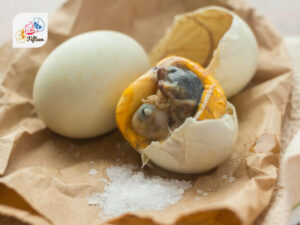
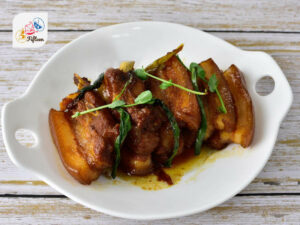
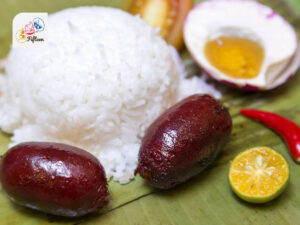
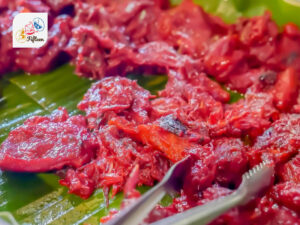

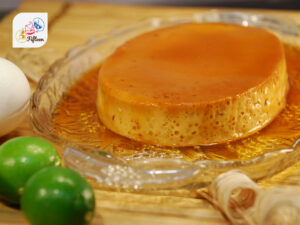
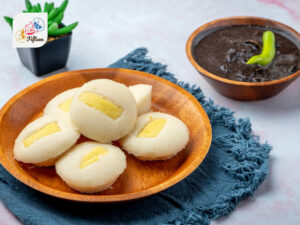
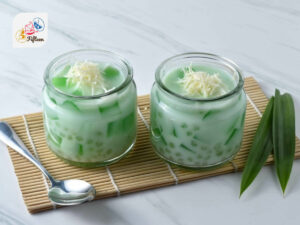
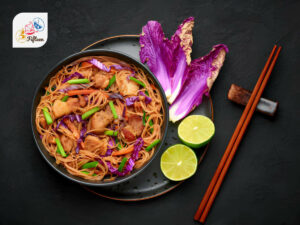
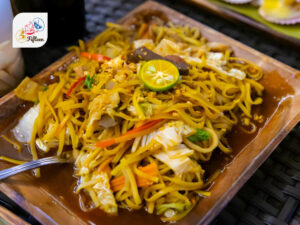
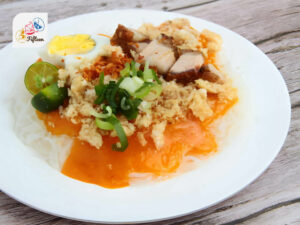
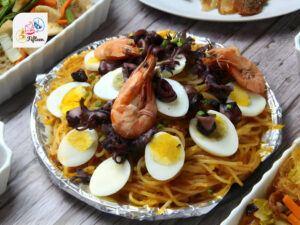
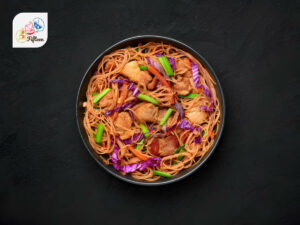
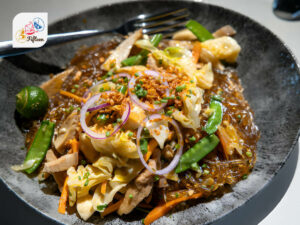
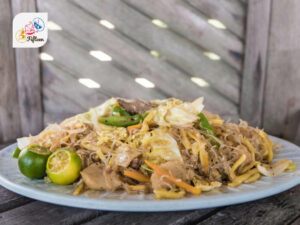
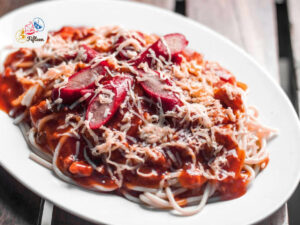

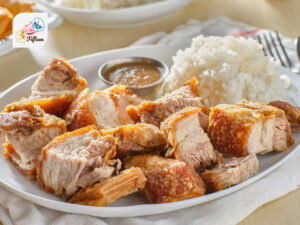
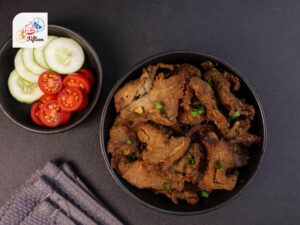
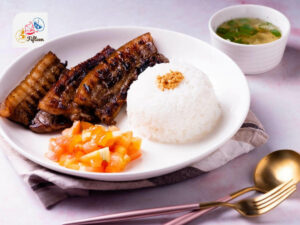
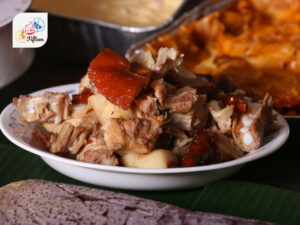
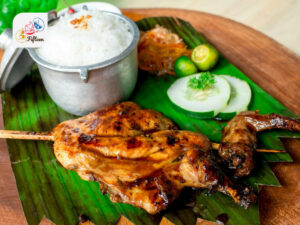
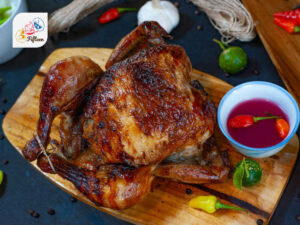
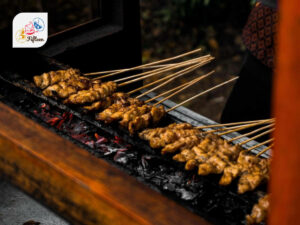

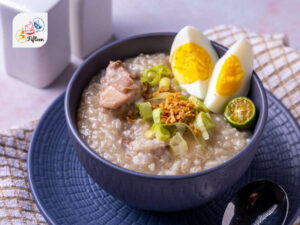
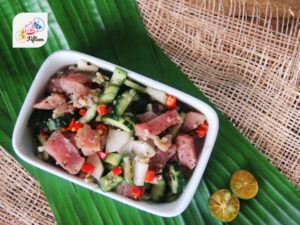
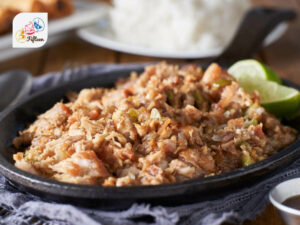
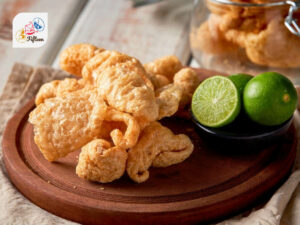
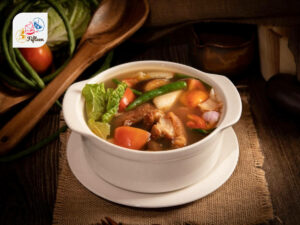
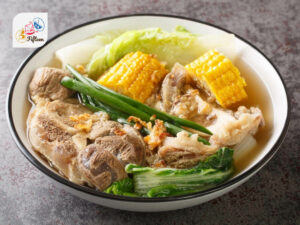
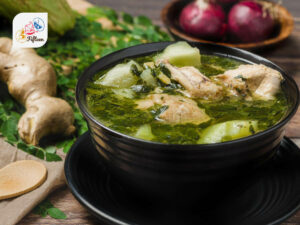
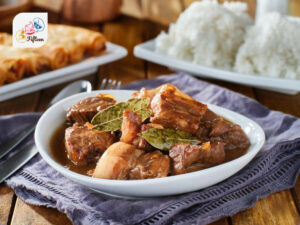
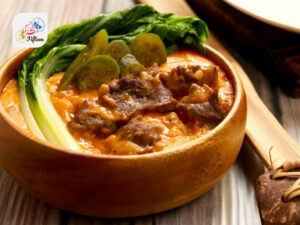
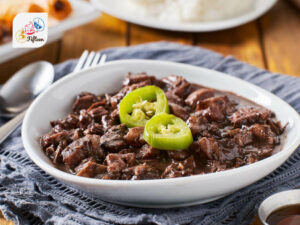
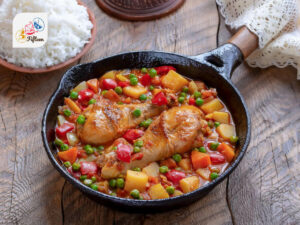
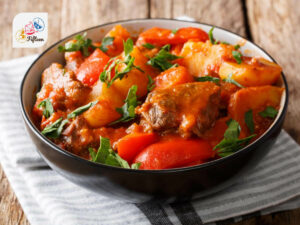
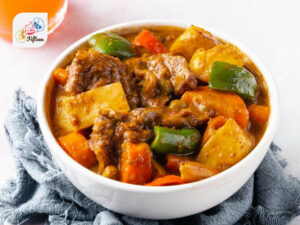
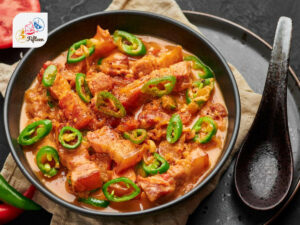
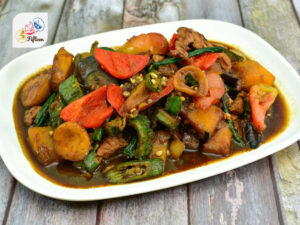
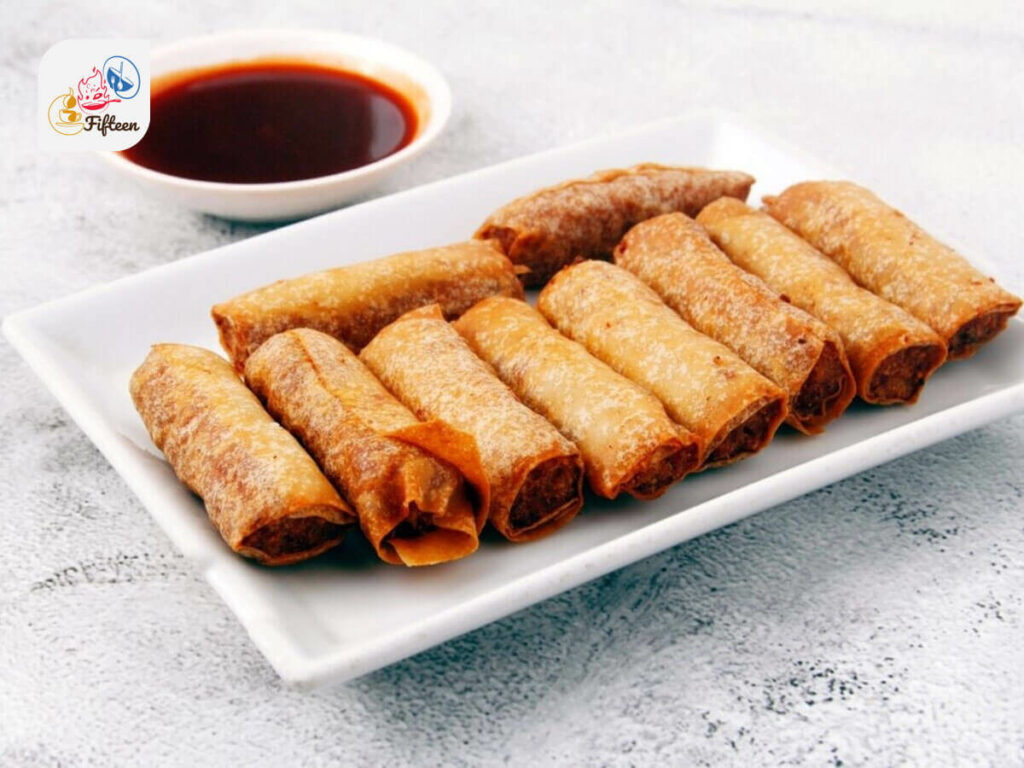
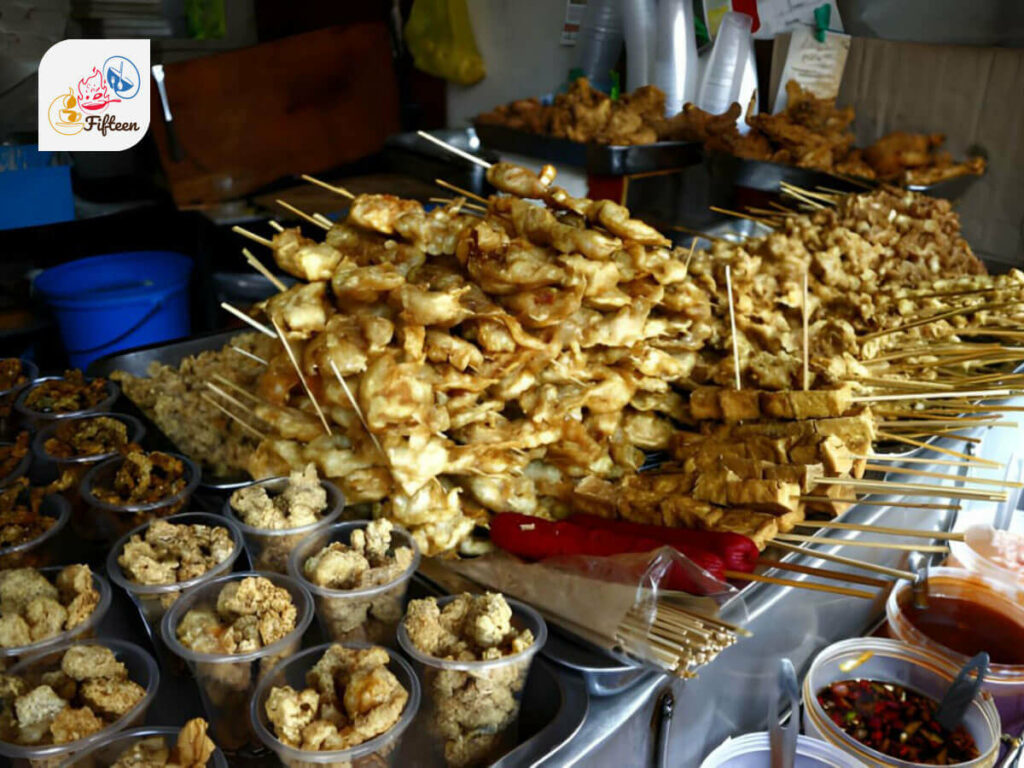
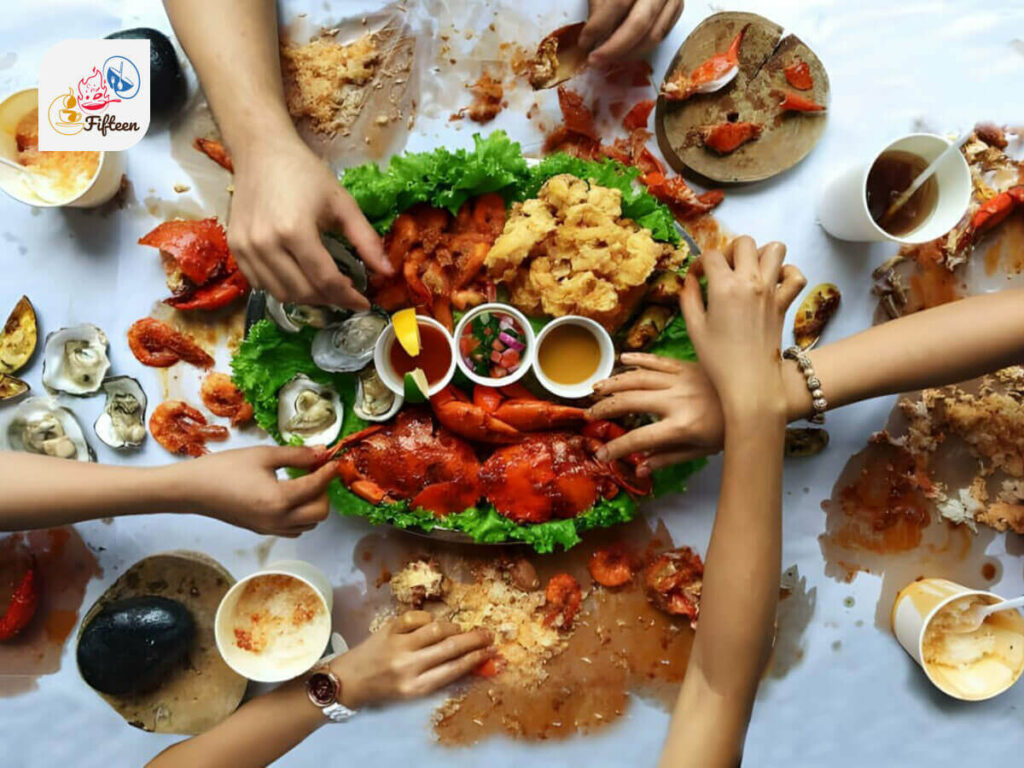

Jamie Scott
Editor in Chief, Senior Content Writer
Expertise
Home Cooking, Meal Planning, Recipe Development, Baking and Pastry, Food Editor, Cooking-video Maker, Western Food Evaluation Expert
Education
Le Cordon Bleu College of Culinary Arts
Local Community College, New York, NY
Jamie Scott is a skilled culinary expert and content creator specializing in Western cuisine. With over 15 years in the culinary field and formal training from Le Cordon Bleu, Paris, Jamie deeply understands how to blend nutrition with delicious flavors. His passion for cooking matches his commitment to making healthy eating accessible and enjoyable.
On Fifteen.net, Jamie brings a fresh perspective to classic dishes and beverages, offering readers insightful recipes, cooking tips, and a fresh view on meal planning that emphasizes taste, health, and simplicity.